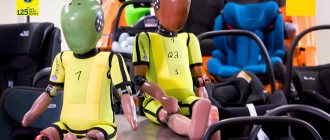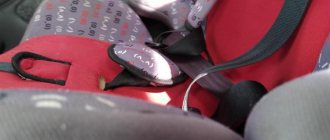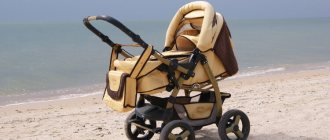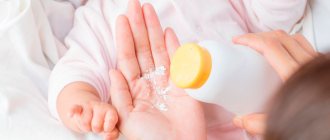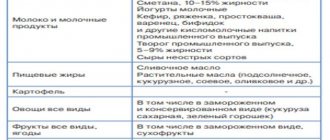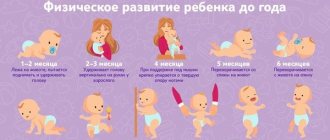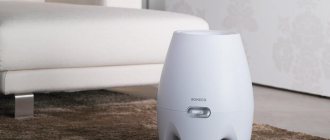car seats: crash test results. Crash tests of ADAC child car seats
When purchasing a car seat, parents should know that the United Nations Economic Commission for Europe has developed a special safety standard for such products.
After 2009, its version ECE R44/04 came into force - its requirements are mandatory for products that are used to transport a child.
Why do you need a car seat?
Before entering the distribution network, all products without exception are properly certified. At the same time, it is guaranteed that there are detailed and understandable instructions, as well as a complete set of everything necessary. There must be a diagonal belt clamp with a mechanism that selects the tension force of the belt.
Preliminary tests should show that falling out of the device is excluded; when turning over, the head should not deviate more than 30 cm from its original position.
The tests do not allow any parts to break, buckles to open, or locking systems to fail. The width of the straps must be more than 25 mm for groups 0, 0+ and 1 and more than 38 mm for 2 and 3.
In the event of a collision, they should not move more than 30 mm.
The certificate is orange in color, it is marked with a sign with the letter E and an index of numbers placed in a circle. This is important for every parent to know, so it is worth sharing this information. Car seat Bertoni JUNIOR
Car seat Bertoni JUNIOR
What are crash tests and why are they needed?
In addition to having a certificate, you should be interested in what the annual official crash tests and test drives of child car seats say.
As a result of a specially developed set of tests, a rating of child car seats is compiled, the results of which make it possible to correctly distribute the various options according to the degree of safety.
This list will help you purchase the most suitable seat for your child. Here the best car seat of the year is determined in different categories.
Thanks to this information, you can more soberly evaluate reviews of various models and find out everything good and bad about any model.
How are chairs classified by age groups?
To begin with, you should know that child restraints are divided into groups according to the weight of the child for which they are designed. This includes indicators such as strength, fixation system and other subtleties. The table below shows what groups of car seats exist:
| Group | Weight | Approximate age | Peculiarities |
| Group 0/0+ | from 0 to 13 kg | from 0 to 12 months | Car seat |
| Group 0+/1 | from 0 to 18 kg | from 0 to 4 years | Armchair |
| Group 1 | from 9 to 18 kg | from 9 months to 4 years | Armchair |
| Group 0/1/2 | from 0 to 25 kg | from 0 to 7 years | Armchair |
| Group 1/2 | from 9 to 25 kg | from 9 months to 7 years | Armchair |
| Group 2/3 | from 15 to 36 kg | from 3 to 12 years | Armchair |
| Group 1/2/3 | from 9 to 36 kg | from 3 to 12 years | Armchair |
| Group 3 | from 25 to 36 kg | from 7 to 12 years | Booster |
A car seat is a restraint system for a newborn up to one year old. It is attached to the seat with special seat belts. The car seat allows the baby to travel in the most comfortable position, that is, lying down.
A booster seat is a wide seat without a backrest. It ensures the correct position and seating height for the small passenger.
There are many comments on the Internet that the booster does not guarantee lateral protection, but today it is very popular and is used quite widely.
The baby, placed in the booster, is secured with a standard belt, which goes diagonally over the shoulder and protects against injury and falling out in an emergency. The booster is used to transport children in a group weighing from 25 to 36 kg.
Car seat - booster
The selection of car seats according to parameters must include mandatory compliance of products with the ECE R44.03 standard. It regulates all technical parameters of a child seat in a car.
According to it, a high-quality ADAC-rated car seat:
- Protects against side and frontal collisions:
- provides for the introduction of a new subgroup “0+” and color coding, which helps when installing the product (red - the front side is installed in the direction of travel of the car, blue - against);
- undergoes a series of tests.
The tests that child seats undergo are as follows:
- compliance of seat belts with tension force, resistance to temperature changes, abrasive substances and ultraviolet radiation;
- opening the belt buckle with a force of 40-60 N, which corresponds to about 4-6 kg when not loaded. If it is present, this figure increases to 80 N;
- preventing the belt from slipping or moving more than the standard.
When choosing a seat, remember the fine for transporting children without a car seat in 2021 - it is already 3 thousand rubles.
Car seat for children: better safety on the road!
Safety Standards
In Europe, a new standard has appeared in 2021 (ECE 129 (i-Size)). It sets strict rules regarding car seats for children.
In the European Union, since 2009, special standards have come into force that are mandatory for use and implementation regarding child car seats. The name of such safety standards is ECE R44.04. Before this year, similar documents had also existed in the European Union since 1995. However, their use in practice was only advisory.
This standard is considered throughout the world to be one of the most stringent and categorical in terms of requirements for children's car seats.
In the Russian Federation there is GOST R 41.44-2005. At its core, its provisions comply with European requirements. This Russian document came into force on January 1, 2007.
You can determine the level of reliability of car seats using a crash test.
Safe car seats by group
| Group 0+ (0-13 kg) |
| Britax Römer Baby Safe 2 i-Size |
| Graco Snugride i-Size + Base i-Size |
| Kiddy Evoluna i-Size 2 |
| Maxi-Cosi Rock |
| Maxi-Cosi Rock + One i-Size |
| Group 0+/1 (from 0 to 18 kg) |
| Britax Römer Dualfix i-Size |
| Maxi-Cosi Axis Fix Air |
| Britax Römer Swingfix i-Size |
| Cybex Sirona S i-Size |
| Group 1 (from 9 to 18 kg) |
| Britax Römer Trifix2 i-Size |
| Maxi-Cosi Pearl One + FamilyFix One i-Size |
| Group 0/1/2/3 (from 0 to 36 kg) |
| Joie Trillo Shield |
| Group ⅔ (from 15 to 36 kg) |
| Besafe iZi Flex Fix |
| Joie Traver |
| Nuna AACE |
| Recaro Monza Nova Evo |
| Recaro Monza Nova Evo Seatfixr |
Crash tests of ADAC child car seats – Avtodeti
Every year, the German auto club ADAC conducts a series of tests of child car seats, choosing the most popular models on sale.
ADAC Testing methodology in Russian Official resources
ADAC
Legend in the table
- Great
- Fine
- Fine
- acceptable
- Badly
- no rating
SELECT YOUR CHILD'S AGE:
up to 15 months up to 83 cm up to 13 kg
9 months−4 years61−105 cm9−18 kg
3.5−12 years 100−150 cm15−36 kg
ADAC Test Method
Independent ADAC tests are more stringent than those carried out during mandatory certification of child car seats. In this way, the German car club helps parents choose the best seats among those legally sold on the market and encourages manufacturers to improve their products.
Twice a year, experts select popular car seat models on the German market, purchase them anonymously and test them, evaluating them according to the following criteria: safety, comfort, ease of use and content of harmful substances.
To assess the degree of injury, modern mannequins of the Q series are used, the digital index of which indicates the child’s age in years: Q0, Q1, Q1.5, Q3, Q6 and Q10.
Each chair is “beaten” with two mannequins of different ages, as well as with different sleep position settings and different types of fastening, if the seat design allows for it. In addition, all car seats are tested for frontal and side impacts.
Thus, each model typically requires six to eight copies to test.
The dummies are equipped with a large number of sensors that record impact loads. Experts analyze the readings of these sensors and correlate them with high-speed video footage taken from several angles.
For a frontal impact, a modified body of a Volkswagen Golf VII without a roof and doors, mounted on a trolley, is used. The impact is performed at a speed of 64 km/h with an uneven deceleration that simulates the deformation of the body of a real car during an accident.
In the event of a side impact, the cart with the child car seat installed moves towards the special panel at a speed of 50 km/h. When a distance of a few centimeters remains between the child car seat and the panel, the cart slows down sharply, simulating the onset of a collision.
Every few years, the testing methodology is improved, as is the algorithm for calculating the final grade. Therefore, tables with results are divided into periods and a correct comparison of results is possible only within one period.
Car clubs and consumer organizations in some European countries take direct part in ADAC tests and publish the results on their websites and in print publications.
However, the final estimates may differ due to the use of different calculation methods.
crash tests in Russian
ADAC tests child car seats twice a year. We promptly publish the results on our blog and translate films into Russian about how the tests were carried out.
In the fall of 2021, ADAC presented the results of crash tests of 20 child car seats. I was pleased that 18 of them demonstrated a decent level of safety. A special feature of the testing was the analysis of popular accessories for car seats.
In the spring of 2021, ADAC tested 31 car seats. 27 models exceeded legal requirements and earned high ratings in all disciplines. A special feature of the test is the analysis of child control systems using a telephone:
The results of the second car seat test in 2021 pleased experts. All models were found to be safe in impact tests. Their rating exceeds the regulatory requirements for manufacturers. 18 models participated in the test:
A feature of the spring 2021 crash tests was the participation of child car seats with built-in airbags, which have proven their effectiveness. The results of the other models were also encouraging - 17 of them earned a “good” rating:
“Our crash tests provide guidance to parents and point out shortcomings to manufacturers,” explains an ADAC expert following the October 2021 test. 12 chairs showed good results, but 2 models failed the test:
The 2021 spring testing program included 37 car seats, including 12 ECE 129 seats. ADAC also analyzed the Mifold booster seat. According to experts, it cannot guarantee the protection of the child:
Website: adac.de/…/kindersicherheitCrash tests: adac.de/…/kindersitz-test
ADAC-2018: autumn crash testsADAC-2018: spring crash testsInterview with Andreas Ratzek (ADAC)Car children at the ADAC test site
Rate this page
4.2 / 22
What it is?
There is a widespread opinion among parents that the most comfortable and safest place for a child in a car is in the arms of the parents. This is fundamentally wrong, since in a high-speed collision there is a very high risk of a child receiving traumatic brain injuries, bruises or a spinal fracture. If a parent holding a child in his arms leans on him, there is a high probability that the child will not survive.
Some parents neglect car seats, believing that they will rarely carry their child in a car, and the service life of an expensive accessory is still short, which cannot be said about the price. How to choose a high-quality car seat for babies among the assortment of models that are abundantly presented on the world market? Which one will provide the greatest safety for your baby and minimize the likelihood of injury?
The most expensive car seat is not always the best; price is not a guarantee of the highest quality. To show the quality of their products, manufacturers, along with independent experts, conduct serious comprehensive checks - crash tests. They clearly show the quality of a particular model, help choose the best option among other models, and encourage manufacturers to strictly monitor the quality of their products.
When choosing a car seat, you can take into account information from the following expert organizations.
- ADAC is a car club from Lahnberg, Germany. Representatives of the club annually test children's car seats for various characteristics.
- ANWB is a Dutch motorists' union testing child seats.
- TCS is a car club from Switzerland. The organization tests chairs according to two criteria: reliability and ease of use.
- WARENTEST is a German magazine that regularly tests restraint devices in conjunction with ADAC. The main aspects of the test are safety and comfort.
- RACC is a car club from Spain that tests the reliability of child seats for cars in accordance with the parameters of the ADAC organization.
Similar organizations exist in Finland, Spain, Italy and other countries. Each organization has its own assessment parameters, but there are also constants that all motorist clubs follow. This, of course, is for the safety of the little passenger. When conducting a crash test, the most important indicator is taken into account - the distance by which the car seat will move during a frontal impact at a speed of 50 km/h. The maximum permissible value is 55 cm.
No. 8 – Baby Care Upiter Plus
Price: 3000 rubles
A chair that has proven itself in use perfectly - thoughtful ergonomics down to the smallest detail, reliable fixation with standard belts, a nice design and an incredibly durable frame - the chair can easily withstand even the weight of an adult, let alone a child.
Some note the lack of a horizontal back position as a serious drawback, but this problem is faced by very adult children; for children there is no benefit from this option.
See also: How to choose the most delicious tea: rating of varieties
There are objectively no other disadvantages, despite the modest cost, the device was a great success - the chair regularly receives high marks both from children and from specialists who study the safety of such devices.
Autoreview results table
The crash test involved 16 car seats in the 9-18kg and 9-36kg categories. We will present the results of a comparison of 4 models: Siger (Russia), Romer King II LS (Germany), Recaro Sport (Germany), Kiddy Phoenixfix pro 2 (Germany). They are the ones that are shocking and even scandalous.
| Siger transformer prime | Romer King II LS | Recaro Young Sport | Kiddy Phoenixfix pro 2 | |
| Frontal kick | ||||
| Maximum head overload, g | 91,21 | 88,29 | 90.32 | 67.28 |
| Maximum chest overload, g | 47,74 | 67,78 | 56.11 | 56.99 |
| Neck tensile force, kN | 2,6 | 3,393 | 3,005 | 1.938 |
| Diving | No | No | No | No |
| Frontal impact assessment based on the worst criteria, points | 6,76 | 4,92 | 5,34 | |
| Side impact | ||||
| Maximum head overload, g | 81,69 | 61,91 | 55,33 | 45,62 |
| Maximum chest overload, g | 67,83 | 84,18 | 79,25 | 82,23 |
| Neck bending moment, Nm | 40,33 | 35,47 | 43,95 | 45,68 |
| Side impact assessment based on the worst criteria, points | 3,94 | 0,5 | ||
| Evaluation of exclusion of incorrect installation, points | 4,5 | 9 | 6,5 | 9 |
| final grade | 5,1 | 2,7 | 3,85 | 4,57 |
Degree of protection:
High
Sufficient
Satisfactory
Slabrya
Bad
The crash test conditions were tough and harsh, like the body of a Lada Kalina.
The impulse for a frontal impact was as if the car had crashed into a deformable barrier at a speed of 68-70 km/h. For a side impact, a deceleration of 31 g was chosen (in Euro Ncap tests 26 g.)
Such conditions were enough for even the famous Romer and Recaro car seats to fail the tests. But the Siger car seat turned out to be the best of the inexpensive car seats. And its overall rating of “satisfactory” seems quite acceptable against the backdrop of the failure of the brand test participants.
The price of a mistake
According to statistics, half of the seats secured with a standard seat belt are not secured correctly. What are the consequences of even a minor mistake?
When installing the Babyton seat, I placed the lap strap of the car seat belt not under the “ear” of the seat cushion, but above it.
A blow - and the chair with a poorly fixed right corner turns to the left. The forward reach was such that the dummy pressed firmly against the back of the front seat. The acceleration of the head within three milliseconds was 144 g, almost one and a half times more than the undoubtedly dangerous 100 g, when a severe concussion is inevitable! And this despite the fact that the inexpensive Chinese Babyton seat is, although not a safety standard, but, when properly secured, it is able to protect a child in the event of a frontal impact.
We were convinced of this when we repeated the test, this time with the correct installation. The forward movement was significantly less, and the dummy did not reach the front seat with its head - the overload was “yellow” 90 g.
So read the instructions carefully, install the chair without fuss and be sure - even when you are in a hurry! - double check that the seat and the child in it are fastened correctly.
Notice the difference? On the first slide is an example of incorrect installation: the belt is passed over the armrest. On the second slide the seat is fastened correctly
Notice the difference? On the first slide is an example of incorrect installation: the belt is passed over the armrest. On the second slide the seat is fastened correctly
/
Rating of ADAC child car seats 2015-2019 in the 9-36kg category
Excellent Good Satisfactory Fairly Unsatisfactory
| Model | test year | Price Euro | Isofix | ADAC score | Safety | Exploitation | Ergonomics | Environmental friendliness | Installation/removal | Weight |
| Influence of the parameter on the assessment | 50% | 40% | 10% | |||||||
| Joie Traver Shield | 2018 | 170 | Yes | + | + | + | ++ | + | 9-36kg | |
| Britax Romer Advansafix IV R | 2019 | 300 | Yes | + | + | + | ++ | + | 9-36kg | |
| CASUALPLAY Multiprotector Fix II (Isofix) | 2015 | 300 | Yes | ABOUT | + | + | + | ABOUT | 9-36kg | |
| Cybex Pallas M | 2015 | 250 | No | ABOUT | + | + | + | + | 9-36kg | |
| Cybex Pallas M-fix (Isofix) | 2015 | 280 | Yes | + | + | + | + | + | 9-36kg | |
| JOIE Transcend (Isofix) | 2016 | 210 | Yes | + | + | + | ABOUT | + | 9-36kg | |
| JOIE Trillo Shield (Isofix) | 2015 | 120 | Yes | + | + | ABOUT | ++ | + | 9-36kg | |
| CYBEX Pallas M SL | 2017 | 280 | Yes | + | + | + | ++ | + | 9-36kg | |
| CYBEX Pallas M-Fix SL (Isofix) | 2017 | 200 | Yes | + | + | + | ++ | + | 9-36kg | |
| KIDDY Guardianfix 3 (Isofix) | 2017 | 320 | Yes | + | + | + | + | + | 9-36kg | |
| CONCORD Transformer Pro (Isofix) | 2012 | 249 | Yes | + | + | ++ | + | 9-36kg | ||
| CYBEX Pallas 2 | 2012 | 220 | No | + | + | ++ | + | 9-36kg | ||
| CYBEX Pallas 2-fix | 2011 | 265 | Yes | + | + | ++ | ++ | 9-36kg | ||
| CYBEX Pallas Fix | 2011 | 230 | Yes | + | + | ++ | ++ | 9-36kg | ||
| KIDDY Guardian Pro 2 | 2011 | 270 | No | + | + | ABOUT | + | 9-36kg | ||
| KIDDY Guardianfix Pro 2 (Isofix) | 2012 | 269 | Yes | + | + | ++ | + | 9-36kg | ||
| RECARO Monza Nova IS Seatfix (Isofix) | 2013 | 270 | Yes | + | + | ++ | + | 9-36kg | ||
| Peg Perego Viaggio 1-2-3 Via | 2018 | 290 | Yes | O | O | + | + | + | 9-36kg | |
| MAXI-COSI Titan Pro | 2019 | 300 | Yes | O | O | + | + | + | 9-36kg | |
| Chicco Youniverse Fix | 2018 | 245 | Yes | O | O | + | ++ | + | 9-36kg | |
| BRITAX RÖMER Advansafix III SICT (Isofix) | 2017 | 285 | Yes | + | ABOUT | + | ++ | + | 9-36kg | |
| BRITAX RÖMER Evolva 1-2-3 SL SICT (Isofix) | 2017 | 200 | Yes | O | + | + | ++ | + | 9-36kg | |
| CONCORD Vario XT-5 (Isofix) | 2017 | 369 | Yes | ABOUT | O | O | + | + | 9-36kg | |
| NANIA I-Max SP | 2017 | 99 | No | ABOUT | + | ABOUT | + | + | 9-36kg | |
| OSANN I-Max SP | 2017 | 84 | No | ABOUT | + | O | + | + | 9-36kg | |
| BRITAX RÖMER Advansafix II Sict (Isofix) | 2016 | 300 | Yes | ABOUT | ABOUT | ABOUT | ++ | + | 9-36kg | |
| CHICCO Gro-Up 123 | 2015 | 149 | No | ABOUT | + | + | ++ | ++ | 9-36kg | |
| HEYNER Multi Protect Aero | 2015 | 110 | No | ABOUT | ABOUT | + | ABOUT | + | 9-36kg | |
| KIWY SLF123 Q-fix (Isofix | 2015 | 195 | Yes | ABOUT | ABOUT | + | + | ABOUT | 9-36kg | |
| RECARO Young Sport Hero | 2015 | 230 | No | ABOUT | ABOUT | ABOUT | ++ | + | 9-36kg | |
| CASUALPLAY Multiprotector Fix (Isofix) 8 | 2012 | 299 | Yes | ABOUT | + | ABOUT | + | 9-36kg | ||
| CHICCO Neptune | 2012 | 139 | No | ABOUT | ABOUT | — | + | 9-36kg | ||
| FISHER PRICE FP3000 | 2014 | 69 | No | ABOUT | ABOUT | — | + | 9-36kg | ||
| GRACO Nautilus | 2012 | 190 | No | ABOUT | ABOUT | ABOUT | + | 9-36kg | ||
| KLIPPAN Triofix & Isofix-base | 2013 | 430 | Yes | ABOUT | + | ++ | + | 9-36kg | ||
| NANIA Beline SP | 2012 | 75 | No | ABOUT | ABOUT | ABOUT | + | 9-36kg | ||
| NANIA I-MAX SP | 2011 | 90 | No | ABOUT | ABOUT | ABOUT | + | 9-36kg | ||
| NANIA I-Max SP Isofix | 2014 | 159 | Yes | ABOUT | ABOUT | ABOUT | + | 9-36kg | ||
| NANIA Racer SP | 2014 | 54 | No | ABOUT | ABOUT | ABOUT | + | 9-36kg | ||
| OSANN Beline SP (baugleich Testsitz NANIA Beline Sp) | 2012 | 85 | No | ABOUT | ABOUT | ABOUT | + | 9-36kg | ||
| RECARO Young Sport | 2012 | 240 | No | ABOUT | + | — | + | 9-36kg | ||
| STORCHENMÜHLE Starlight SP | 2013 | 170 | No | ABOUT | + | ABOUT | + | 9-36kg | ||
| STORCHENMÜHLE Taos | 2012 | 140 | No | ABOUT | ABOUT | ABOUT | + | 9-36kg | ||
| BREVI Tao b.fix (Isofix) | 2012 | 267 | Yes | ABOUT | + | ++ | + | 9-36kg | ||
| IWH Multimax | 2012 | 99 | No | + | ABOUT | ++ | ABOUT | 9-36kg | ||
| PHIL & TEDS Tott XT | 2012 | 129 | No | — | ABOUT | ++ | ABOUT | 9-36kg | ||
| KIDDY Guardianfix Pro (Isofix) 9 | 2012 | 269 | Yes | — | + | ++ | + | 9-36kg | ||
| PHIL & TEDS Tott-XT | 2011 | 140 | No | — | + | — | ABOUT | 9-36kg | ||
| RÖMER Xtensafix (Isofix)10 | 2013 | 300 | Yes | + | ABOUT | ++ | + | 9-36kg | ||
| TIGGO Bebehut | 2014 | 37 | No | — | — | — | + | 9-36kg | ||
| UNITED-KIDS Alpha Deluxe | 2014 | 29 | No | — | — | — | + | 9-36kg | ||
| UNITED-KIDS Kid Comfort | 2014 | 48 | No | — | — | — | + | 9-36kg | ||
| UNITED-KIDS Kidstar | 2014 | 38 | No | — | — | — | + | 9-36kg | ||
| KIDS EMBRACE Friendship | 2016 | 149 | No | — | ABOUT | ABOUT | ++ | + | 9-36kg | |
| GRACO Milestone | 2017 | 249 | No | O | O | + | + | up to 36kg | ||
| CASUALPLAY Multipolaris Fix (Isofix) | 2017 | 250 | Yes | — | + | + | ++ | + | 9-36kg | |
| JANÉ Grand (Isofix) | 2017 | 280 | Yes | — | O | + | ++ | + | 9-36kg | |
| LCP KIDS Saturn iFix (Isofix) | 2017 | 140 | Yes | — | O | + | + | + | 9-36kg |
Below we will provide detailed conclusions from the testing organization on some 9-36 cars that have passed crash tests.
What place in a car is considered the safest according to statistics?
According to inexorable statistics and realities of life, any vehicle in the event of a serious accident (collision, coup, etc.) is subject to varying degrees of damage. Manufacturers of passenger cars are trying to protect passengers by creating a kind of increased safety field around them, trying to reduce body deformation in the area of passenger seats.
Thus, the safest seat in the car is located where the likelihood of overloads hazardous to health and body deformations is minimal. In other words, this is the place in the car where the chances of surviving a serious accident are much higher than in the rest.
Many drivers still consider the safest place for a passenger to be behind them, but this is not true. This version has long been debunked and there is a lot of evidence for this. The main arguments for such a statement are the driver’s instinctive removal of danger from himself, which consists in removing his side from the trajectory of the impact, exposing the opposite side. There is also a popular version that the child is safest behind the passenger seat.
To identify the safest passenger seat, many studies have been carried out, including a thorough study of statistics on road traffic accidents with victims.
Additionally, a number of crash tests were carried out, especially now they have become as close to reality as possible and are carried out independently of manufacturers, who, of course, are interested in presenting their products as safer than their competitors.
Based on the results of numerous tests and accident analysis, the safest place for a child was identified - the rear middle seat, provided that the child is in a special seat (for small children), correctly installed, or wearing a seat belt (teenagers). The level of safety when a child is in this place is 15-25% higher compared to other seats.
This statement is confirmed by the design features of the car, since when a small passenger is in the rear in the middle, it reduces the likelihood of injury both during side impacts and during a vehicle rollover, which causes deformation of the doors, side pillars and side parts of the roof.
It is in the center of the rear passenger row that there is most of the free space necessary to save a small passenger. Of course, such an effect is only possible when sitting in a child seat or using other special devices or a standard belt in the case of teenagers.
Parental neglect of safety measures leads to an increase in child injuries and mortality in road accidents. They argue with dubious arguments, such as that the child is uncomfortable sitting, does not like it, or give dubious arguments for exceptional situations when the absence of restraints saved a life. When the standard seat belts are fastened, the risk of injury to the child increases many times over, even during emergency braking, since the child will not stay in place.
Many inexpensive cars and family cars are equipped with special mounts for mounting child seats in the center of the rear row. Most passenger vehicle models are equipped with a standard seat belt or at least a cross strap. When the vehicle is equipped with seat belts in this manner, to preserve the life and health of children, it is strongly recommended that they be placed in the middle of the rear row of seats.
The favorite for the safety of child seat placement is the golden mean
Listening to the advice of both domestic and foreign experts, it is best to seat your precious child directly in the middle of the back seat sofa. If you visually imagine the location of the child seat inside the car in the back, in the middle, then it is obvious how much free space there is around it.
In the event of a crash, this seat is 16% safer (according to statistics from case studies at the University of Buffalo) than all other child seat positions. This is indeed, if not the safest place in the car for a child seat, then certainly to the greatest extent among the variations discussed above. It is surrounded by space that is not compressed during a collision (including lateral ones on both sides).
FAQ
Which fastening is better - isofix or using car seat belts?
The Isofix system allows you to securely fix the chair on the car seat. It consists of brackets located at the base of the device, which are attached to the anchor brackets of the car body. In terms of safety, it is preferable, but such a system is not suitable for all cars. Standard seat belts are found in any vehicle, so this mount is considered universal. But don't forget to consider the length of the belt when choosing a chair.
Which is better, a car seat or a booster?
When choosing a car seat, we first of all care about the safety of the child during the trip. A device such as a booster seat does not meet this criterion because it will not protect your child from injury in a collision. The cushion is designed to increase the height of a small passenger in order to be properly secured with a seat belt. Therefore, it is worth choosing a full-fledged chair that has protection on the sides.
Which is better, framed or frameless?
The seat frame provides additional safety for the baby in the vehicle. The backrest can also be adjusted, and the soft cover on it promotes the correct position of the spine, which makes the ride comfortable. Frameless devices are inconvenient and unsafe, so give preference to the former.
Should you choose a cradle or a chair for a newborn?
The chairs are absolutely not suitable for newborns due to their developmental characteristics. A car seat can only be used when the child has learned to sit confidently on his own without support. But it’s better from one year on, when the baby’s spine becomes stronger. Therefore, for babies it is worth choosing a cradle with a horizontal position or a carrier with a semi-sitting position.
Which crash tests should you trust?
Crash tests are an artificially created emergency situation, thanks to which the harm caused to passengers can be assessed. In our case, we can determine how safe the chair is and whether it can protect the baby from injury.
- ADAC, a German auto club, is the most authoritative organization for testing restraint systems. The company conducts strict independent examinations according to the following criteria: protection, reliability, comfort, and ease of use.
- IIHS, the Institute of Insurance and Highway Safety from America, tests chairs according to the following parameters: reliability, environmental friendliness, comfort. Also analyzes the behavior of seat belts in cases of accidents.
- The ÖAMTC is an Austrian automobile club that continually revises its testing methodology based on improvements in technology and customer preferences.
- ANWB, an automobile association from Holland, uses the ADAC method when testing. Particular attention is paid to side impacts and environmental friendliness of materials.
- EuroNCAP is the European Automotive Committee. Conducts testing of the cars themselves with car seats installed in them. It was he who suggested using the Isofix system as more reliable. Does not provide seat ratings.
In Russia, the publication Autoreview deals with the issue of safety in case of road accidents. It tests seats in domestic bodies according to the following criteria: comfort, protection of the head, chest, abdomen, legs, spine and gives scores from zero to ten. However, the number of models tested by Autoreview is very small, and many ratings are already outdated, so we recommend paying attention to the availability of tests conducted by the companies from the list above.
The best universal car seats
Universal car seats are suitable for transporting children weighing from 9 to 36 kg (from one year to 12 years). Some of them are even equipped with special inserts for newborns, which further increases the service life of such seats.
Such a purchase is very profitable, but in terms of comfort, universal models are sometimes inferior to specialized chairs designed for a narrower age category.
Chicco Youniverse – maximum safety and versatility
5.0
★★★★★editorial assessment
100% of buyers recommend this product
See review
The Italian new product complies with the ECE 044 safety certificate, and in 2021 the chair passed the crash test from ADAC and received an overall rating of “satisfactory”. The model is presented in 4 colors: strict black, neutral gray, bright red and rich burgundy.
The car seat is sold in 2 configurations: with or without a built-in Isofix system - for fastening with standard belts. The model has internal belts with rubberized inserts. For children under 4 years old, this is a 5-point fixation; for older children, there are 3 attachment points. Soft side inserts create a high level of comfort and protect against injury when hitting the side.
The chair can be used as a sleeping place - 3 backrest positions ensure the comfort of a child at any age. The headrest and seat belts are height adjustable to suit the height of the passenger. All removable elements are machine washable. And so that they don’t get lost, the chair has a compartment for storing them.
Pros:
- adjustable back;
- reliable side protection;
- excellent build quality;
- internal straps;
- removable covers;
- compartment for storing accessories.
Minuses:
- Everything sticks to the upholstery fabric - the chair will have to be cleaned constantly;
- The narrow seat is uncomfortable for heavy-set children, especially in winter.
Getting to grips with the Chicco Youniverse settings is difficult. Before installation, you should carefully study the operating instructions or watch a video review. But then the child will be able to travel with his parents to any distance with maximum comfort.
Zlatek Atlantic Lux – when you want to save money
4.8
★★★★★editorial assessment
90% of buyers recommend this product
The Russian-made universal car seat Zlatek Atlantic belongs to the budget segment. Nevertheless, it is made conscientiously and provides the child with the proper level of safety. The seat will reliably protect the baby not only in frontal, but also in lateral collisions.
For younger passengers, the model includes a hypoallergenic soft insert and a removable headrest. 5-point internal harness with height and depth adjustment securely secures a child up to 4 years old. The seat back has a reinforced frame and anatomical shape for proper fit.
Pros:
- low cost;
- light weight (5.3 kg);
- internal belts with height and depth adjustment;
- removable covers;
- lateral protection;
- cast metal frame.
Minuses:
- it is difficult to install and fasten the belt fastener;
- unclear instructions.
The manufacturer states that the chair covers are machine washable. However, buyers notice the appearance of “wrinkles” and creases on textiles after such washing. So it is better to clean the chair manually without removing the upholstery from the frame.
Reviews
On otzovik.com
Before buying a car seat, you need to evaluate not only the build of a seven-year-old child, but also the interior of the car. Otherwise, a situation may arise that it will take up a lot of space in the back seat and in the trunk.
On irecommend.ru
For a child over 7 years old, you need to choose a car seat very carefully. And it’s better to buy something more expensive so that it has additional functions: raising the headrest, widening the seat, etc. This way the child will be as comfortable as possible when traveling over any distance. And if the child looks older than 7 years old, then you can get a booster. But it is better not to use it for a long journey.
